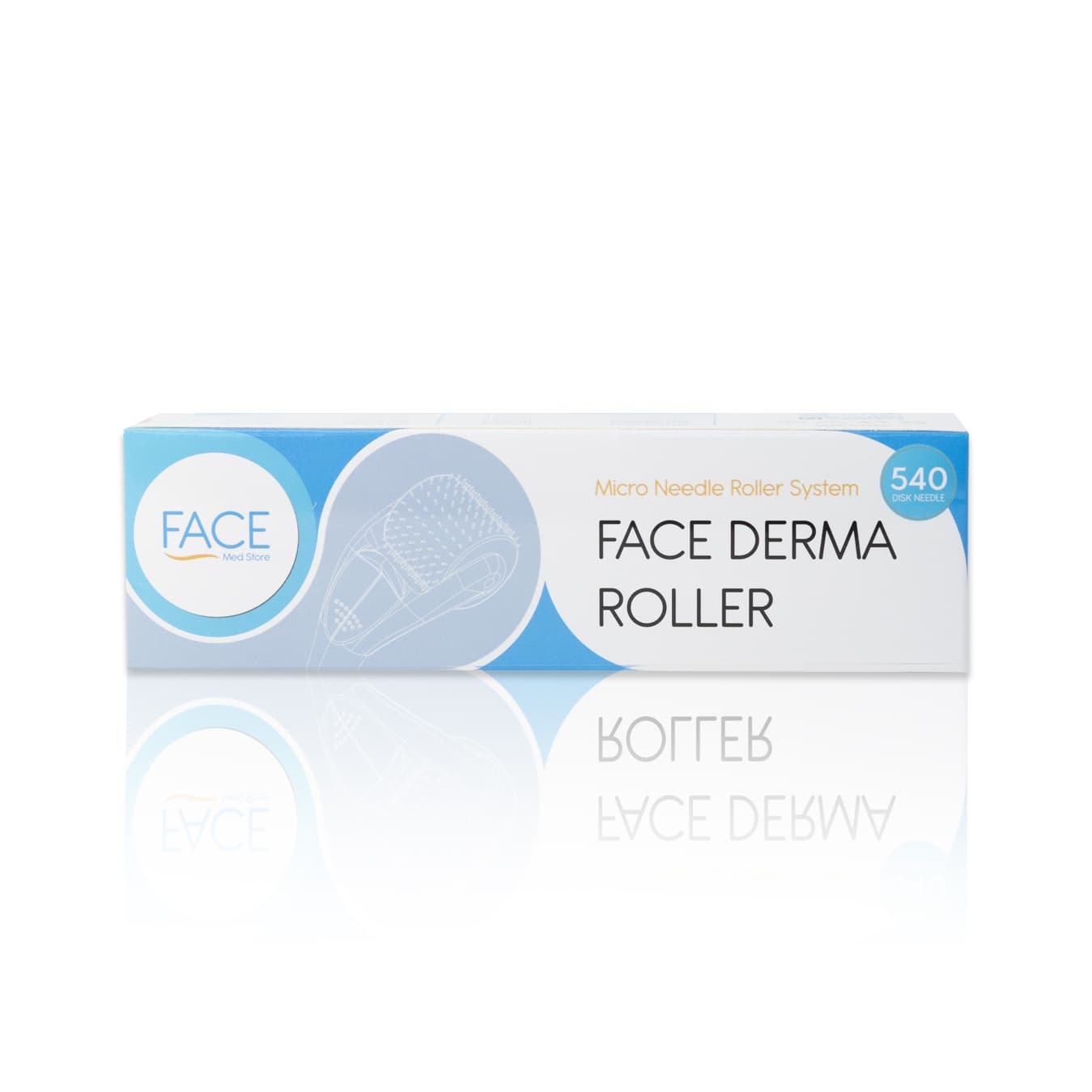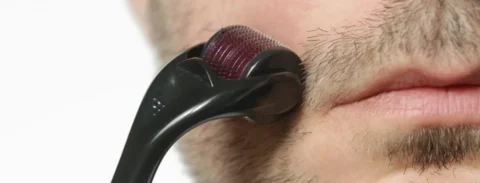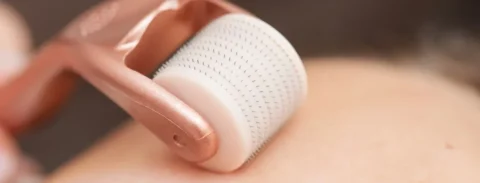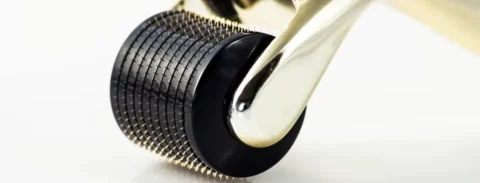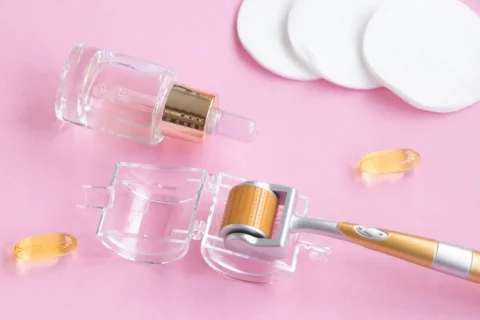If you’re struggling with acne scarring, every day spent looking at the discolored marks or indented depressions on your skin can feel disheartening.
You just want your skin to look smooth and clear again. Is that really possible without expensive laser treatments or extensive downtime? Surprisingly, using an at-home derma roller may provide noticeable improvements within the first month when used properly.
Keep reading to learn what results you can realistically expect after 1 month of derma rolling your acne scars. We’ll cover the timeline of changes, before and after photos, the wound healing science behind it, technique tips, and how to enhance the benefits.
Month 1 Derma Rolling Results: Early Signs of Improvement
After just 4 weeks of regular derma rolling sessions, some fading of red or purple post-acne marks may start to be noticeable.
However, research indicates more time is needed to see significant collagen increases that could plump indented scars. The microneedling process aims to trigger increased collagen over time, but one month is likely too soon to see dramatic effects.
Additionally, the small injuries from the needles summon the body’s healing response, which may help calm some lingering irritation leftover from acne. However, claims of powerful anti-inflammatory effects in just 1 month need more evidence. As treatment continues over time, inflammation may gradually decrease.
While improvements in pitted or sunken scars take longer to achieve, patients may notice some soothing effects after 1 month. However, depressed scars will likely require longer treatment for substantial filling.
Maintaining regular sessions as recommended by your dermatologist is important for optimal results over time. Some risks like scarring or skin damage are also possible with microneedling, so oversight by a medical professional is advised.
Overall, be patient and manage expectations for 1-month results, as more time is needed to see significant collagen boosting and scar smoothing. Consult your provider to establish the best treatment plan for your needs.
How Do Derma Rollers Physically Improve Acne Scarring?
Derma rolling can be used safely at home to improve various skin conditions leading to scarring, including acne, injuries, cuts, and burns. The micro-punctures trigger natural renewal and collagen formation in the skin, without being an invasive procedure.
Hypertrophic scars appear as raised, red, thickened skin that stays within the boundary of the injury. They are less common than the atrophic indentations left by inflammatory acne. But derma rolling can help improve these raised scars by breaking down scar tissue bands through the micro-injuries.
The wand-like derma roller device is covered in hundreds of tiny titanium microneedles, ranging from 0.25mm to 1.5mm long. The needles painlessly pierce the top layers of skin by gently rolling them over acne scars, creating microscopic injuries without causing bleeding or real damage.
It may sound counterintuitive to purposefully wound your face. But this controlled micro-trauma tricks the body into jumping into repair mode. The normal wound-healing process activates fibroblasts, collagen-producing cells in the dermis. They go into overdrive generating new collagen and elastin to heal the micro-injuries.
- With consistent use every 4 to 6 weeks, layers of collagen gradually build up underneath acne scars over the course of 6-12 months. The indentations are physically lifted, resulting in a smoother surface. The tiny needles may also break up stiff scar tissue bands formed deep under ice pick or boxcar scars.
- In addition to boosting collagen, derma rolling improves microcirculation in the skin. Tiny blood vessels dilate and bring oxygenated blood to repair tissue damage. This feeds the skin the nutrients it needs to heal and rejuvenate.
Derma rolling should only be performed using sterile needles and proper aftercare to avoid infection.
What Does The Research Show About Derma Roller Acne Scar Improvement?
Multiple medical studies have found derma rolling significantly improves the appearance of acne scarring, especially when combined with topical treatments. This list includes past and present studies for your better reference:
Microneedling Compared to Placebo for Acne Scars (2015)
- Single center, randomized controlled trial with 20 patients.
- Compared microneedling (1-2 mm depth) to a placebo treatment.
- Found that after 3 microneedling treatments over 5 weeks, there was a significant improvement in acne scarring compared to the control group over 3 and 6 months.
- No adverse events were reported, only mild transient erythema and edema.
Systematic Review of Microneedling for Acne Scars (2016)
- Systematic review of 9 randomized controlled trials on microneedling for acne scars.
- All studies showed microneedling was effective as a monotherapy or in combination with other treatments for improving the appearance of acne scars.
- No serious adverse events were reported; only mild transient side effects like pinpoint bleeding and erythema.
Microneedling Safety and Efficacy for Acne Vulgaris (2023)
- Prospective study with 31 patients treated with weekly microneedling for 3 months.
- Used Goodman and Baron’s grading scale and Lipper and Perez score to evaluate acne scarring.
- Found significant improvement in scarring, with mean Goodman and Baron’s grade decreasing from 3.29 at baseline to 1.77 at 2 months post-treatment.
- Only mild side effects like burning sensation and erythema were reported.
Evaluation of Microneedling Fractional Radiofrequency Device for Treatment of Acne Scars (2014)
- Review article on the mechanism and efficacy of microneedling for acne scars.
- Microneedling creates micro-injuries that stimulate collagen production and tissue remodeling, improving the appearance of scars.
- Considered a safe and effective option compared to more invasive treatments.
- 3-4 sessions are needed for moderate scarring, up to 8 for severe.
Microneedling With Topical Preparations in the Treatment of Atrophic Post-acne Scars (2022)
- Systematic review of 33 studies on microneedling for acne scars.
- All studies showed improvement in scar appearance after treatment.
- Evidence was inconsistent comparing microneedling alone versus combination therapy or versus laser.
- Concluded microneedling improves acne scarring, more studies are needed comparing it to other minimally invasive treatments.
How Should You Use a Derma Roller Properly and Avoid Damage?
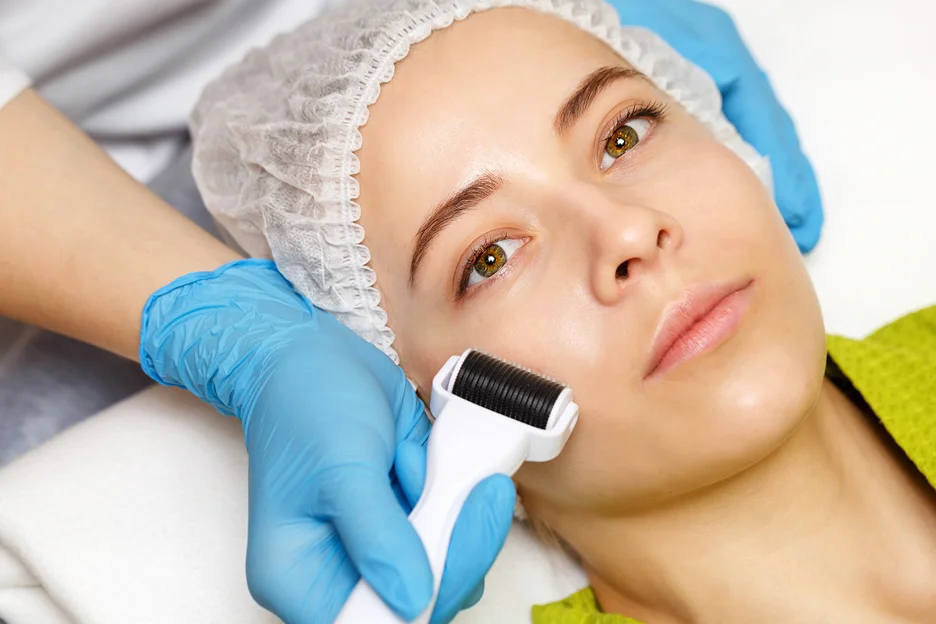
Like any skincare tool, the technique is vital to getting optimal derma roller results safely. Here are some tips for using it correctly on acne scars:
- Disinfect the roller with 70-90% isopropyl alcohol before and after each use. Never share or reuse rollers.
- Apply a numbing cream 30 minutes before rolling if needed to reduce discomfort.
- Cleanse skin and apply hyaluronic acid serum as a lubricant before rolling.
- Roll 4-8 times per section, adjusting the roller slightly each time to cover the area.
- Apply moderate pressure and roll each area 4 to 8 times. Do not over-roll in the same spot.
- Roll once weekly or every 10 to 14 days. Allow 48 hours for optimal skin rejuvenation between sessions.
- Apply soothing aloe vera gel and avoid makeup, sun, and sweating for 24 hours after.
- Use a 0.5mm roller for general face and body acne scars. Use 1.0-1.5mm for severe ice pick scars, not higher than 1.5mm for at-home use
Be diligent about proper sanitization, gentle pressure, and aftercare – when done correctly, derma rollers are safe for at-home use.
Combine Derma Rolling With Topical Serums for Added Scar Healing Benefits
Derma rolling may also aid the absorption of some topical products. You have to carefully consider which serums to apply, though, as some may not be suitable immediately after derma rolling.
For example, vitamin C could potentially slow healing, so it’s recommended to avoid it post-treatment. Here are some options that may provide additional scar healing benefits when applied after rolling:
| Ingredient | Possible Benefits |
| Hyaluronic acid | Deeply hydrates and may help plump indented scars. |
| Niacinamide | Can reduce inflammation and even skin tone over time. |
| Retinoids | May increase cell turnover to smooth scars when used properly under medical guidance. |
Only apply serums after rolling, when the microscopic channels are open to allow products to penetrate deeply into the skin. Start slowly with once-weekly sessions and gradually increase frequency based on your skin’s response and your dermatologist’s guidance.
Maintain Healthy Skin Habits To Get Long-term Derma Roller Improvements
While derma rolling prompts new collagen formation to physically improve the look of acne scars, maintaining the results relies on your daily skin health habits. Make sure you support your skin’s renewal between sessions by:
- Drinking plenty of water and eating a nutrient-rich diet.
- Applying broad spectrum SPF 30 sunscreen daily.
- Avoiding picking/touching active acne breakouts.
- Cleansing gently and avoiding irritating products.
- Applying a rich night cream before bed. A caveat, though: Using occlusive creams after may increase the risk of infection.
- Getting 7-8 hours of sleep per night.
- Reducing stress through yoga, meditation, etc.
- Adopt a better diet rich in zinc, omega-3, and vitamin C, to cite a few, which will help in promoting skin health.
Healthy skin habits combined with regular derma rolling will help you see satisfying improvements in your acne scarring after the first month and beyond.
Track Your Derma Roller Acne Scar Progress with Photos
Seeing gradual changes in your complexion and scar texture can be difficult. Take standardized photos in the same lighting every 4-6 weeks to track subtle improvements.
Comparing photos over time serves as motivating proof that the derma roller is working. It also helps you identify any problem areas needing more attention.
Use the captions to make notes about changes or adjustments needed in your technique. This makes the photos even more helpful for assessing your progress.
Patience and Consistency Pave the Way to Better Acne Scar Reduction
It takes at least 3 months of weekly derma rolling to see moderate scar improvements, with gradual enhancement over 6 to 12 months. Remember that the process stimulates your skin’s own renewal powers – this takes diligence and time.
Stick with your routine even if immediate dramatic changes don’t happen after the first session. Consistency is absolutely vital for training your skin and building collagen over the long term.
Pair your derma roller with other acne scar treatments like microneedling or fractionated laser resurfacing for optimal improvement over time. With patience and the right techniques, you will see real changes.
Further Your Acne Scar Treatment Journey with Face Med Store

If you’re interested in learning more about professional skincare procedures and products to enhance your derma rolling routine, consult with a board-certified dermatologist or licensed esthetician.
Combining approaches under medical supervision may offer greater improvements for certain acne scar types, depths, and skin types. But always do your own research and discuss realistic expectations, risks, and benefits before pursuing additional in-office treatments.
Your derma rolling routine serves as an accessible first step and lays a foundation for further scar improvement options when part of a healthy lifestyle. With time, a steady effort, and the right professional guidance, you can continue your journey towards renewed confidence in clearer, healthier-looking skin.
With Face Med Store’s tried-and-tested solutions and cosmetic expertise, we empower your skin’s innate abilities to heal and regenerate itself.
Stop by our store to know the full range of options available!
